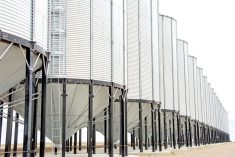CNS Canada — It was an eventful week for the ICE Futures Canada canola market as many in the trade were preparing for the release of Statistics Canada’s crop production report on Thursday.
While the report is always taken lightly because it relies on month-old data, it still gives participants some sense of how the market is doing.
In the end, the agency’s prediction for the upcoming harvest was mostly in line with traders’ expectations. The agency pegged this year’s crop at 18.2 million tonnes, which was significantly lower than last year’s crop.
Read Also

U.S. grains: Soy hits four-month high on hopes for China trade deal
U.S. soybean futures jumped to their highest level in more than four months on Monday on hopes that China will resume buying American supplies after President Donald Trump said the countries were set to reach a trade deal during his trip to Asia this week.
The front-month November contract suffered losses of $8.50 to dip below psychological support at $499.50 a tonne. The January contract posted a minor gain, though, rising $2.40.
The losses were mostly brought on by improving weather conditions in Western Canada, recent strength in the Canadian dollar and choppy action in Malaysian palm oil.
There are also comments by those in the trade that canola is getting expensive relative to other oilseeds.
It’s not clear whether StatsCan’s report really swung the market in any direction. However, what caught most people’s attention was the fact the agency raised last year’s production total to 19.6 million tonnes, up from 18.4 million.
“That should allay some fears about running out of canola,” said Ken Ball of PI Financial in Winnipeg.
Commercial supplies are still reasonably tight, though, and the stocks number may have to be revised in the near future, he said.
Much of the attention now is on the U.S. Midwest, which is expecting cooler weather next week, he said. In particular, a full moon is scheduled for Sept. 6.
“The word ‘frost’ has been in the air; there’s a cold dip coming,” he said. “It’s cool south of the Great Lakes and if any north winds come over that, it will get chilly.”
— Dave Sims writes for Commodity News Service Canada, a Winnipeg company specializing in grain and commodity market reporting.












